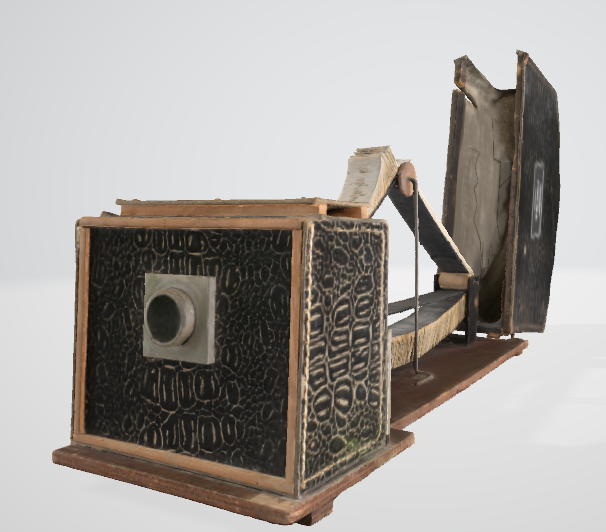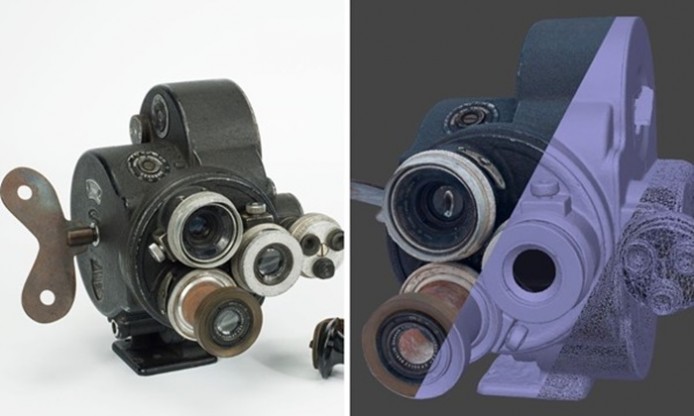img. Cinematographic camera. Bell & Howell, 1940. Museu del Cinema – Col·lecció Tomàs Mallol. Digitised model by CRDI – Ajuntament de Girona, in collaboration with La Tempesta Media. EUreka3D project/CRDI-Ajuntament de Girona CC BY-SA
The digital transformation of the Girona City Archive has been a lengthy process that has provided significant professional learning while also representing a substantial change in the organisation’s workflows. The archive is primarily a space for preservation and physical storage, but it is also a space for discovery, knowledge, experimentation, and creation. The amplification of these values is closely associated with the technological possibilities of the moment, increasingly well-used by a sector that has also learned how to transform itself.
In the context of project EUreka3D, CRDI Centre for Image Research and Diffusion of the Girona City Council digitized in collaboration with La Tempesta and shared as open access via the EUreka3D Data Hub a beautiful 3D collection of pre-cinema heritage equipment and objects, as representative samples of the heritage elements preserved at the Cinema Museum in Girona.
The new objects digitised in the EUreka3D project and published in Europeana.eu comprise of 50 items belonging to the following categories: image projection, capturing and viewing still images of the real world, image animation, optical illusions and visual tricks, and amateur cinema.
This unique selection showcases the diversity, quality, and uniqueness of an extensive cinematographic heritage. In facts, the overall aim of the Museum of Cinema goes beyond the permanent exhibition in Girona. Its ultimate goal is to promote dissemination, education and research on cinema and imaging in general. To fully achieve this aim, 3D digitisation is becoming crucial, as it opens plenty of opportunities for research but also for a more realistic approach in digital representation. Having detailed 3D models, it will support the Museum in boosting the visitors’ engagement. For example, by creating 3D printed replicas of the objects, to be used by visually impaired visitors, or to view internal parts and fragile mechanisms; by creating new virtual scenarios onsite and enriched experiences for online visitors; and by giving access to a complete and realistic vision of the cultural object with all the knowledge associated with it.

Also worth to mention, this collection of precinema equipment and objects is not the first experience with 3D digitization of photographic heritage. In 2022, CRDI and La Tempesta collaborated to digitise in 3D a selection of 99 daguerreotypes and this endeavour served to explore the benefits of 3D digitisation in the heritage field but also to identify the challenges posed by such an initiative. An interesting case study was published after this experience.
![]() EUreka3D project is co-financed by the Digital Europe Programme of the European Union.
EUreka3D project is co-financed by the Digital Europe Programme of the European Union.


